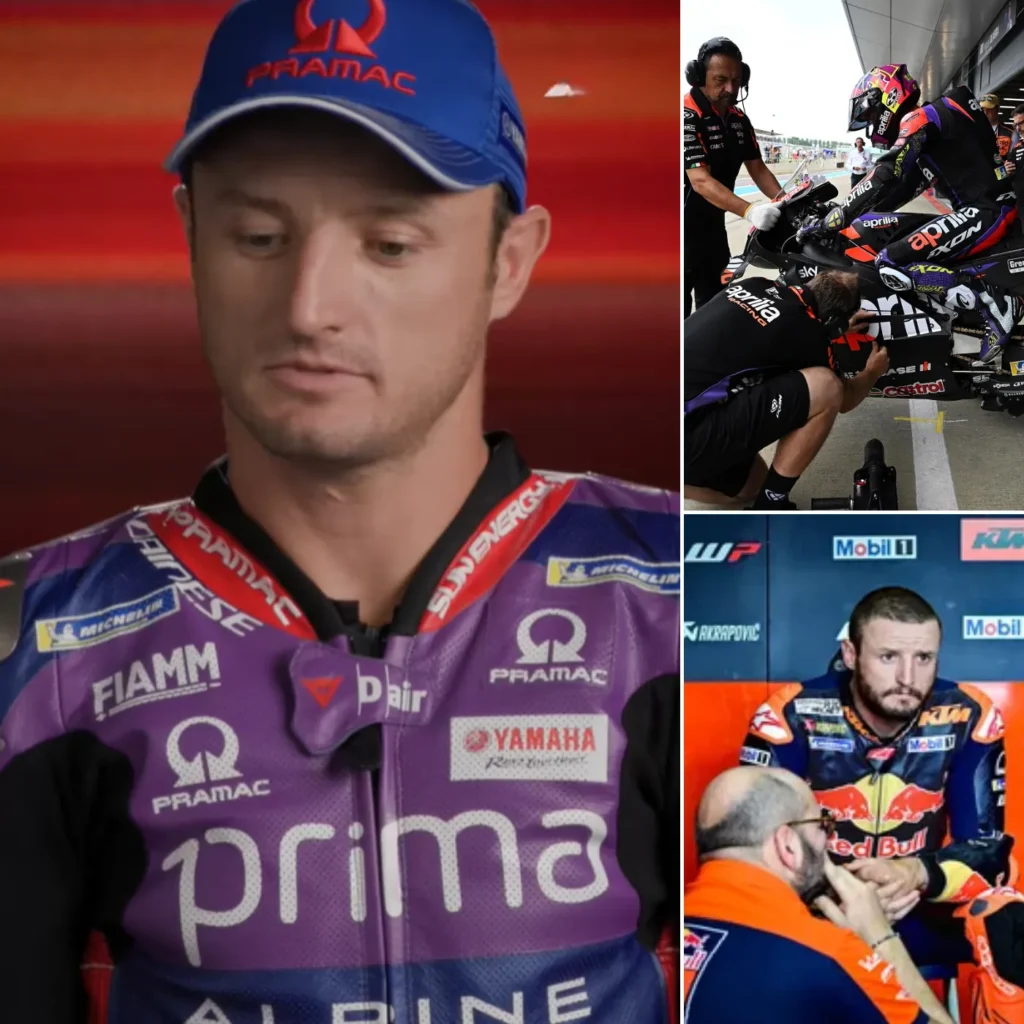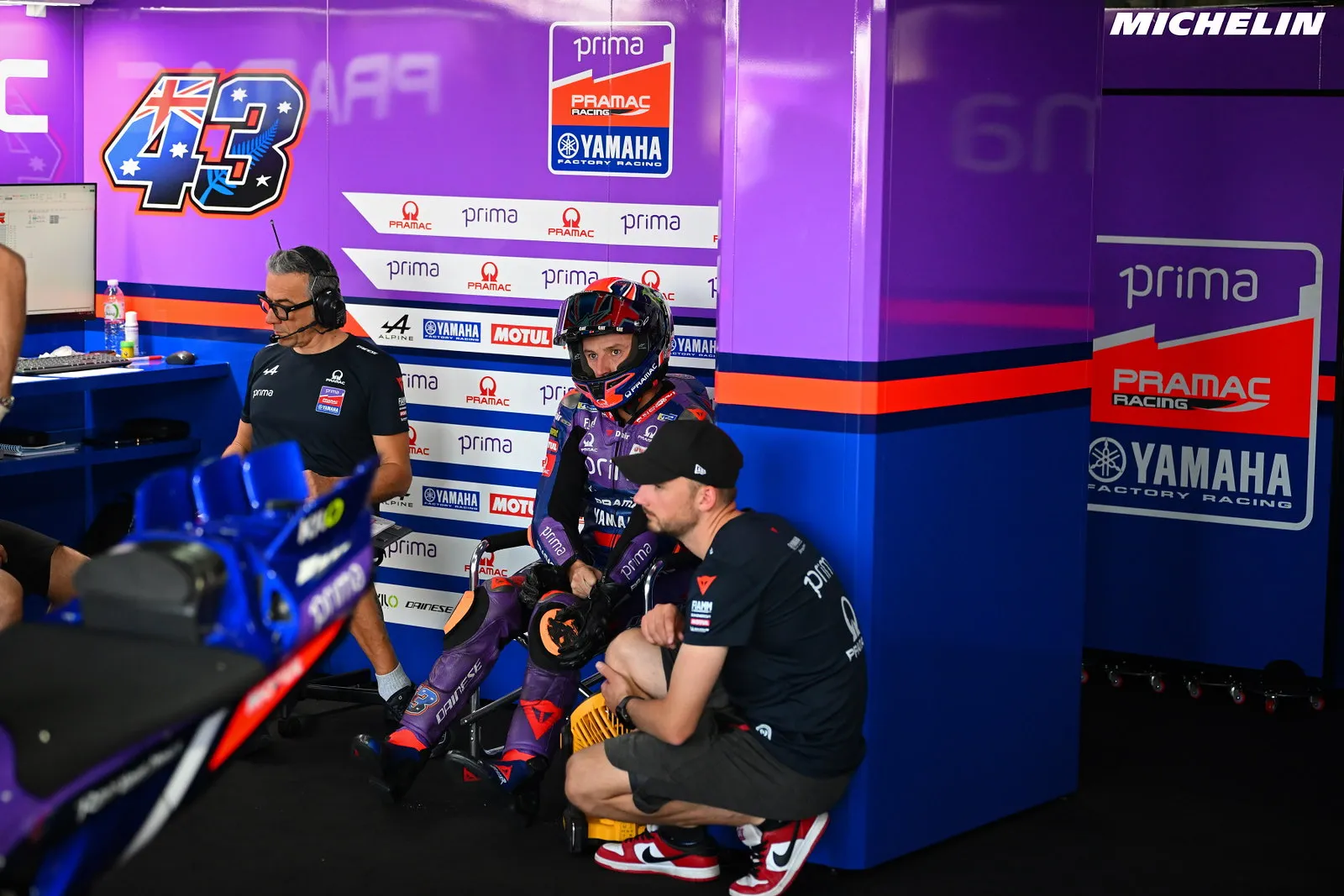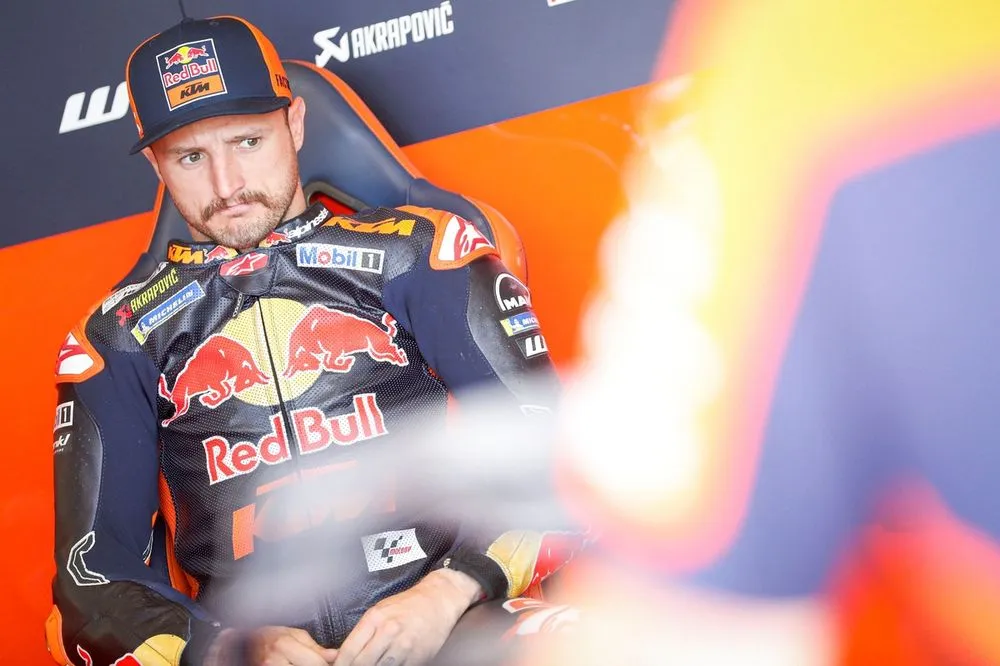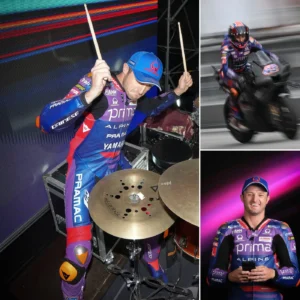Jack Miller was chastised for making such a bold statement. The Yamaha M1 is the future, whereas KTM is declining.

Jack Miller has never been one to shy away from controversy. The Australian MotoGP rider, known for his no-nonsense attitude and candid remarks, recently stirred the pot with a bold statement: “The Yamaha M1 is the future, whereas KTM is declining.”
This comment sent shockwaves through the MotoGP community, especially considering Miller’s own ties to KTM. While some dismissed it as mere speculation, others saw it as an insightful take on the current trajectory of these two manufacturers. But is there any truth to his claim? Let’s dive deep into the performance of Yamaha and KTM, analyzing their recent history, technological advancements, and the broader landscape of MotoGP.
Jack Miller and His Connection to KTM
Jack Miller has been a key figure for KTM since joining their factory team in 2023. Before that, he had a successful stint with Ducati, where he showcased his ability to battle at the front. His switch to KTM was seen as a fresh challenge, one that could potentially lead to championship contention.
However, KTM’s results have been inconsistent. Despite flashes of brilliance, they have struggled with reliability, tire management, and overall race pace compared to dominant forces like Ducati and, at times, Yamaha.
Miller’s recent statement about KTM’s decline raises eyebrows, especially given his current role within the Austrian manufacturer. Was this a moment of frustration, or does he genuinely believe KTM’s trajectory is heading downward?
The Yamaha M1: A Machine Built for the Future?
1. Yamaha’s Recent Struggles and Comeback Plans
Yamaha’s MotoGP journey has been tumultuous in recent years. Once a dominant force in the hands of legends like Valentino Rossi and Jorge Lorenzo, the Yamaha M1 has faced significant challenges, particularly against the rise of Ducati and KTM.
In the 2022 and 2023 seasons, Yamaha’s struggles were apparent. Fabio Quartararo, their standout rider, carried the team almost single-handedly, securing podiums despite the bike’s clear deficiencies in top speed and acceleration. The M1 was consistently outgunned on straights, making it difficult for riders to compete against Ducati’s Desmosedici and KTM’s RC16.
However, Yamaha has been working tirelessly to address these issues. Key areas of improvement include:
- Increased top speed: Yamaha has been collaborating with Formula 1 engineers to enhance engine performance.
- Better aerodynamics: Inspired by Ducati’s innovations, Yamaha has been introducing new fairings and wings to improve stability.
- Chassis refinements: Handling has always been Yamaha’s strength, but they are refining the balance between agility and power delivery.
With these changes, Yamaha is positioning itself for a strong comeback. Could this be what Miller meant when he said the M1 is the future?

2. The M1’s Strengths: Why It Could Dominate Again
Despite its recent struggles, the Yamaha M1 remains one of the most well-balanced bikes on the grid. Some of its core strengths include:
- Superior cornering ability: The M1 has always excelled in high-speed cornering, making it a favorite on technical circuits.
- Smooth power delivery: While Ducati and KTM rely on aggressive acceleration, Yamaha’s inline-four engine offers a more controlled output, benefiting riders in long races.
- Tire-friendly design: Yamaha’s gentle approach to power delivery often results in better tire management, a crucial factor in modern MotoGP.
If Yamaha continues on its current trajectory, it could once again challenge for titles. But is KTM really in decline?
KTM’s Performance: A Declining Force or an Underrated Threat?
1. KTM’s Recent Struggles: The Challenges They Face
Despite some impressive performances, KTM has faced challenges in keeping up with Ducati and, in some cases, Aprilia. Key issues include:
- Unpredictable handling: While KTM’s aggressive chassis design allows for strong braking, it often comes at the cost of mid-corner stability.
- Electronics and rideability: The RC16 still struggles with electronic management, making it difficult for riders to extract consistent performance.
- Tire degradation: KTM’s reliance on aggressive acceleration and braking often results in excessive tire wear, putting them at a disadvantage in longer races.
2. KTM’s Strengths: Why It Might Prove Miller Wrong
Despite its setbacks, KTM is far from a spent force. In fact, the Austrian brand has made impressive strides since entering MotoGP in 2017. Some of KTM’s key strengths include:
- Explosive acceleration: The RC16 is one of the fastest bikes off the line, making it formidable in starts and early race battles.
- Strong development program: KTM has a solid pipeline of talent and engineers, ensuring constant innovation.
- Aggressive rider lineup: With Miller, Brad Binder, and upcoming talents like Pedro Acosta, KTM’s roster is one of the most exciting on the grid.
While KTM faces challenges, writing them off completely might be premature.

The Bigger Picture: MotoGP’s Evolving Landscape
MotoGP is in a state of constant evolution. Ducati currently dominates, but the landscape can shift rapidly. Yamaha’s resurgence and KTM’s potential struggles highlight the competitive nature of the sport.
What This Means for the Future of MotoGP
- Yamaha’s trajectory looks promising. With their renewed focus on speed and aerodynamics, Yamaha could be a major title contender in the coming years.
- KTM must address its weaknesses. While still competitive, KTM must refine its bike to remain in the fight for championships.
- Ducati remains the benchmark. Any discussion about MotoGP’s future must acknowledge Ducati’s dominance, which both Yamaha and KTM are striving to overcome.
Final Thoughts: Was Miller right or wrong?
Jack Miller’s statement that “The Yamaha M1 is the future, whereas KTM is declining” is certainly a bold one. While Yamaha is making positive strides, KTM is still a serious contender and not necessarily in decline.
Perhaps Miller’s words were a reflection of internal frustrations or an attempt to stir discussion. Either way, one thing is certain—MotoGP’s future remains unpredictable, and the battle between Yamaha, KTM, Ducati, and other manufacturers will continue to thrill fans worldwide.
Jack Miller’s statement about Yamaha and KTM has divided the MotoGP community.
- He raised valid points about Yamaha’s resurgence and KTM’s inconsistencies.
- However, publicly questioning his team’s future was a risky move that could have consequences for his career.
Whether this was a moment of frustration, a calculated move, or a sign of things to come, one thing is clear:
Jack Miller has sparked a MotoGP controversy that will not be forgotten anytime soon.
Only time will tell if Miller’s prediction holds true.







